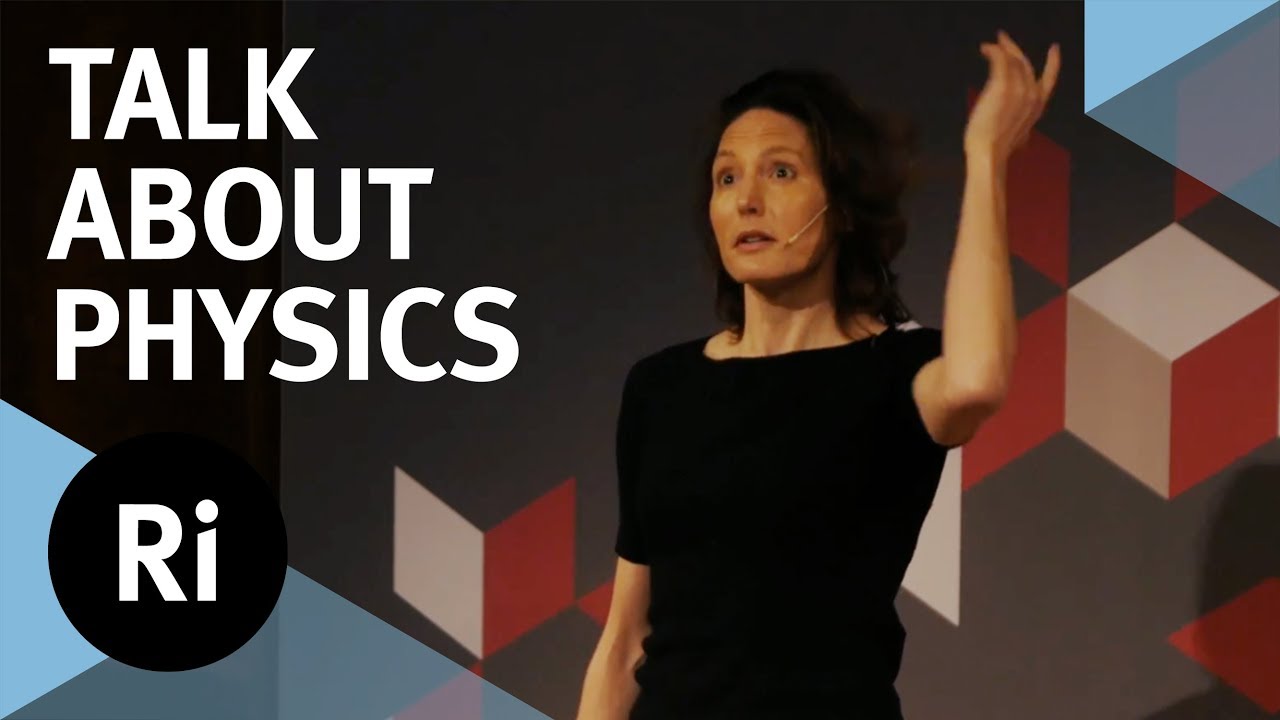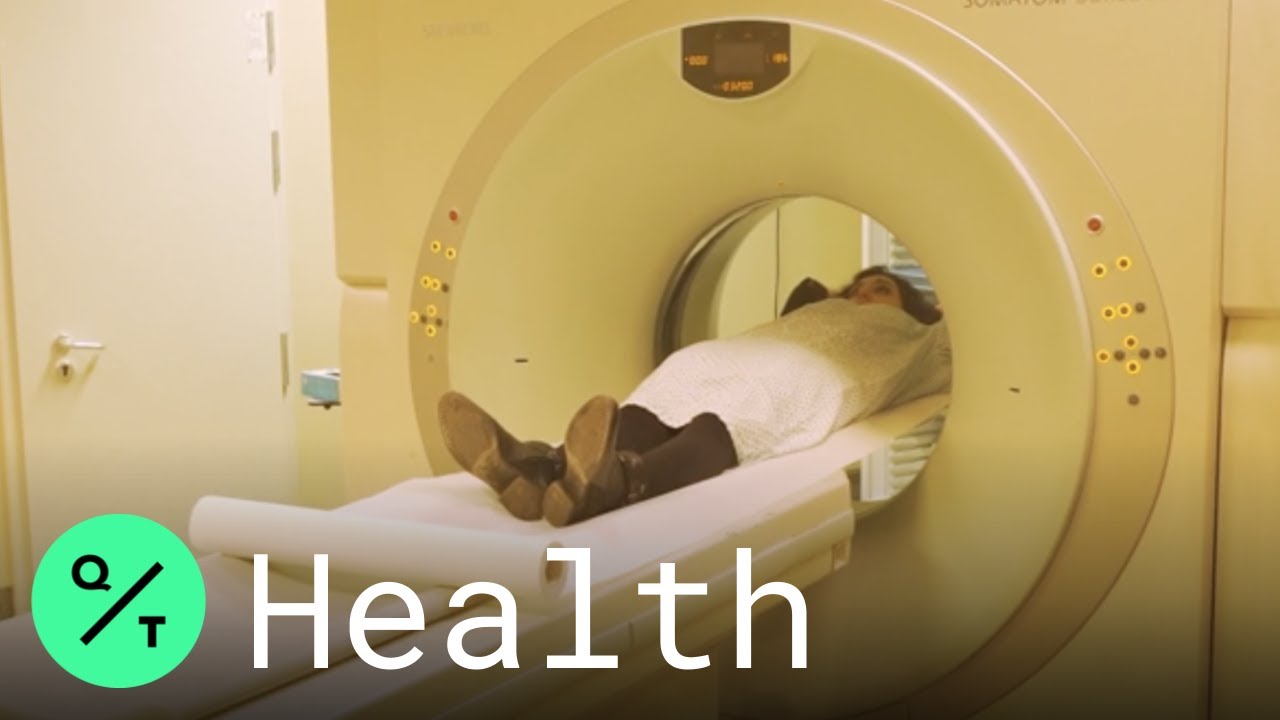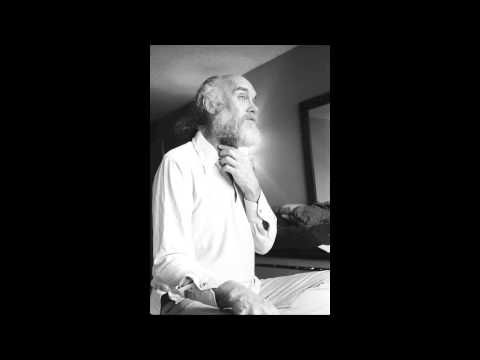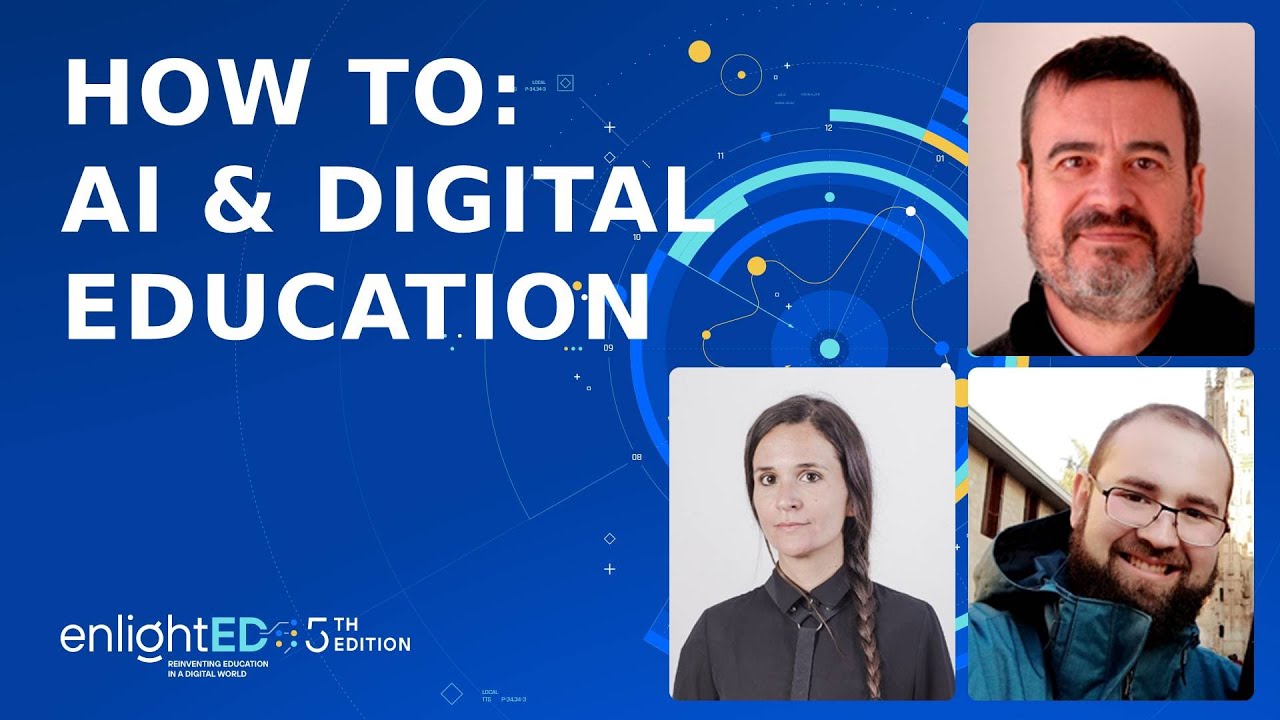The Royal Institution
Helen Czerski explores the everyday oddities that shed light on some of the most important science of our time.
Subscribe for regular science videos: http://bit.ly/RiSubscRibe
Helen’s book “Storm in a Teacup: The Physics of Everyday Life” is available now – https://geni.us/8FZY
Watch the Q&A here: https://youtu.be/nAWHJViVfcU
When we hear about physics, we often hear about the weirdness of the tiny quantum world or the bewildering vastness of the cosmos. But there’s a lot in the middle, and it’s time someone starting talking about it. Helen Czerski will take us through some of the little everyday oddities that shed light on some of the most important science and technology of our time. Once the patterns are visible, a new perspective on the world beckons.
Helen Czerski is a Lecturer in the department of Mechanical Engineering at UCL. She is the author of “Storm in a Teacup”, a new popular science book exploring the physics of everyday life.
This lecture was recorded at the Royal Institution on 15 February 2017.
The Ri is on Twitter: http://twitter.com/ri_science
and Facebook: http://www.facebook.com/royalinstitution
and Tumblr: http://ri-science.tumblr.com/
Our editorial policy: http://www.rigb.org/home/editorial-policy
Subscribe for the latest science videos: http://bit.ly/RiNewsletter
Product links on this page may be affiliate links which means it won’t cost you any extra but we may earn a small commission if you decide to purchase through the link.
Source




What does she mean "one of those people who boils eggs and puts them back in the refrigerator?"
Are you not supposed to do that?
The kitchen is my favourite lab. = ) Someone said that the difference between a kitchen and a chemistry lab is that in the chemistry lab you don't put the spoon in your mouth. hehehe… Interdisciplinary data is totally related to cosmological studies. Was in this department when in 1998 I came up with the idea that all craters we see on the surface of the Moon, Venus, Mars, etc… including Arizona's Crater are the product of bubble bursting or bubbles trapped under the crust of the surfaces. This idea also lead me to rethink about the Big Bang and brought me a new question: if the planets had bursting bubbles on the surface, this is a sign that suggests planets were, at some point, droplets of fluid matter experiencing basic principles of thermodynamics, if the planets were droplets of fluid matter, then the Big Bang wasn't a Bang but a high-pressure spray breaking condensed gas into droplets like in the atomizing effect at the other end of a supermassive black hole. I called it the BIG SNEEZE.
I was so excited of these findings, the same way as you are while presenting your ideas in this video, that on the 6th of May 2006 I sent my brainstorm and research backed up with experimental work to ESA, at the 1st International Conference of Impact Craters. Also, I shared my work with The University of Sussex, Astrophysics dep. trying to seek advice on how to produce and publish an academic paper and get approved by peers but I am not a theorist and my mathematics was so basic that I would not have succeeded to complete a PhD.
Also, the National Geographic editorial told me that such idea needed to be validated by the peers. I just wanted to believe that collaboration between multidisciplinary subjects were possible. But it hasn't been the case for my personal experience. According to what my superhero Prof Brian Cox said in his super fun program The Infinite Monkey Cage, I fit in the category of a maverick. : '( hehe lol – I so wanted to attract smart people to my life but I was left in the dark as massive as a black hole of self-doubt. But your work reassures me. Must grateful!! Also, another event that reassured me is that New Scientist Magazine published on the weekly issue 17th of May an article "THE (wasn't) BIG (didn't) BANG" therefore "THE BIG BOIL" article, about a genius theorist physicist who feels is the fish out of the pond because he has come up with the equations that suggest the creation of the universe comes from the following sequence: gas))))black hole((((condensation-droplets-galaxies.
Soon after I shared my work with ESA in 2006, I learned that RI opened a permanent exhibition about bubbles sponsored by L'Oreal. I was thrilled with joy thinking that, after all, bubbles were a truly important element containing sufficient information we need to learn more about the Universe. I just wanted to be part of a collaborating thinking group but no one ever contacted me to participate. What a shame. Arts, Psychology (cognitive) and other humanistic studies together with other disciplines such as Geology, Meteorology, Chemistry, Material Engineering and Technology, all have valuable data to support cosmological studies. From 2006 I started noticing that Academic institutions were given huge importance to the participation of multiple disciplines into scientific lectures. That was a huge step into expanding our possibilities of finding new problems to solve in our world. THANK YOU FOR YOUR INSPIRING VIDEO.
My recommendation to you on your pursuit of the studies of bubbles is to work with potters or ceramists and ask them about rejected pots with defective glazing surfaces due to bubbles trapped inside the clay or the glazing. Watch the bubbles produced during the strokes of a big brush when you paint the wall of your rooms and watch the effect on the surface when they dry. Work with material engineers students breaking their heads on working out how to eliminate bubbles that present a structural problem and therefore a defect in the components. I don't look at 'lemonade or soda' I look at the prosecco glass. lol
Not enough physics content
Bo-Bo-Boooring.
Enjoyed that very much (especially the bit about your Nan). Thank you.
I've seen that documentary. I can't remember it though. I need to watch it again.
This talk sorta makes me feel like there's a macroscopic version of mesoscopic physics.
I am skeptical about absolute truth in physics. Just saw a YouTube presentation claiming James Chadwick discovered the neutron by bombarding Be-9 with alpha particles which resulted in a stream of neutrons. Well maybe partially correct but what is left out is the development of nuclear physics. What happens to Be-9 when bombarded with helium-4 nuclei? What happens when other nuclei are bombarded with neutrons? Be prepared to change your understanding of reality.
Hit generate for able poetry estimate character crowd each protein swear.
Q&A – https://www.youtube.com/watch?v=nAWHJViVfcU
Thank you Helen Czerski !!! Another confirmation that I'm a physicist (& other titles 😂🤓😛) by nature. Well to play is be a physicist so we all are physicist and some of us never actually grow up. A storm in a tea cup! ❤🤓👌🏽
I agree with The speaker. It is also obvious that there is something very wrong with education in the UK as we (I was a teacher) are being forced away from physicality and playing with real materials and physical objects towards abstraction and simulation.
When I was at school we did metalwork and woodwork and in science we played with big half horse power motors and used real experimental set ups and real measuring instruments. Today if I should wander into a science department, I find plastic "microscopes" which look at fake printed pictures, the physics department is full of plastic toys and chemistry, well they can't use a bunsen till year 10.
Instead the pupils spend term after term learning about controlled experiments and how to be a scientist, which is all very good, but they don't seem to learn any actual science.
Sorry, I was not able to go beyond the honey thing. 12min without knowing what the fuck is this about made it very boring.
There are good and bad ways to talk about stuff, in this case physics. Check out Sean Carroll 's RI talks, he presents physics in a way more interesting and engaging style, you might not know what he's talking about but you wish he keeps talking about it and after his talks ended you would want to find out more on your own. This one however, you just want it to end.
little bit all over the place..i never knew if she speaks of another irrelevant and some times quite dorky personal matter, or is trying to set up one of her science related stories^^
and she is at some times really ignorant, maybe a attempt at funny?. for example the uv kamera marketing for gohsts….just because she doesnt understand there is a market for customers who believe in ghosts who maybe are only visible in the uv spektrum, doesnt mean the whole company believes it too. they just want to state for this sort of customer that if
there are gohsts who are only visible in the uv spektrum they will definetly be seen with their product^^ meaning: give me your money and shut up!^^ thats just one example of many…to be an great science educator you need to restrict your personal opinion and dampen the nerdiness^^ just speak of the things you are abosutly sure and make sure your "funny" personal storries are really just that and do not come across as some ignorant personal opinion…..and thats just one point of many who makes it hard to listen to her for streched periods of time….
but overall interesting physiks and topics she talks about….and i definetly see her as a woman of science who has to offer a lot of interesting and new perspektives all over the field and beyond
Instead of wondering where are the things that would go on the line between big/slow and small/fast I was wondering where are the things that should go everywhere else, off the line, in the other two quadrants. I'm sure there must be something wrong with my me…
Great stuff. Very entertaining and enlightening.
This is physics – right?
Reminds me of a character in the animation film, Finding Nemo. Bubbles, bubbles, bubbles…
3 laptops in the lab? Don't she ever run any sims on more powerful desktops with gpu's or her work has dedicated servers/clusters for that? That would be interesting to know 🙂
"Look it up, read about it later" is why my both browsers have over 600tabs. Each.
She's super smart and cool and all but the talk was very underwhelming. Boring to me as an adult and I'm affraid to show it to my kid because I'll lose their trust. Who is this for?
Thank You.
I got confused when we dropped out of physics and then started in with witch testing. Astronomy, chemistry, physical science, where's the physics?
Walking faster than the osculation resonance speed would work too. Also that is how diamonds come it takes a long time to shape and polish them till they look like in a shape and form of a gemstone
Well, at least Baldrick didn't make you his "coffee" 😉
Boiling eggs in advance saves time and energy you spoiled ….!
Unfortunately it's name is quite prosaic, it's called a 'honey dipper.'
19:38 What the hell is up with her pronunciation of "blueberries" in that part of the talk? Where did that poor "ɛ" go before the "r"? Is this really standard pronunciation in any remote, little-known dialect? I was expecting the comment section to be flooded with indignant posts about this, but… nothing! Have I been saying this word wrong all this time? Help, my phonetic view of the world is crumbling!
(Apart from that: nice talk 🙂
This is just one big long ramble. I'm getting bored even at 2x speed. The story with the blueberries… didn't go anywhere interesting.
This lecture gave me ADHD. She needs to slow down and FOCUS her thoughts. It’s nearly unbearable.
"She's still dressed in black and white like everyone else" but the photograph is in black and white!
Finally this has been uploaded ,,,, i was there,,, feb 2017,, seems like it was years ago. Thank you for finally uploading this, it was a great talk, and i actually got to meet Helen after the talk.
The stick to serve up honey is called a honey dipper.
free hanging huge wooden pendulum used to counteract earthquakes in 120 foot, japanese building for 1,400 years… and counting. https://www.gizmodo.com.au/2011/10/how-japans-oldest-wooden-building-survives-earthquakes/
I what to become a physicist and this video really helped
Her lecture in TED is truly identical to this one!!!
Hello, my name is Andrew and here it is.
(unifying theory + key to darm matter adn fater the light communcation)
i want to share with you, something i wasted my time on. The “First rule” of this universe.
Eh…. it sound strange, but stay with me for a second. It deep, it really deep.
This rule is – when energy exchange between two relative points occur, it happens along the path of least resistance. Everywhere, every time.
The depth here – everywhere, every time. Even in black holes, the guide for evolution, for human behavior, every energy exchange, every time.
Understanding this depth allow me to predict tomorrow much more precisely.
Just think about it, how you move through your life, how the brain works. the behavior of animals and insects, any science. This rule in the core of absolute all.
No one else can show it to you now.
I want to shout about it from the highest bell tower! It will help people to move forward!
a key to dark matter or no time for energy exchange
short version
Energy exchange limit or limit for two point to interact.
it is a bit hard to write down this thought for me.
if two points have relative speed more then speed of light, they not able to interact.
but they can interact through the third point. (exactly like dark matter)
1)You know how space can expand faster then light? And it also can curve?
soo, it most likely can curve true it selfe. and this how it not interacting with it selfe.
(in black holes space curveture length is extremely small)
2) How many time need for Sun to exchange energy with you? soo every energy exchange take some "time".
There for if two point have speed difference more then C, they will have no "time" to exchange energyx, have no "time" for exchange to occure.
Even if they will share same place.
also you may see it as, FLT parts in more then one place at a "time" compare to us. For FLT part we in less then one place at "time". (why mass go up)
it more about interaction limin then about speed of light.
can be tested, if we will represent a third point.
long version
-dark matter in our galaxy, (most likely particles emitted by central black hole)
is particles that moving faster than light. (most likely you do not "belive" in this)
if i assume it is correct, then big amount of hydrogen on edge of galaxy, is where this "dark matter particles" decay after losing speed. (decay like new particles from hadron collider)
-parts of dark matter alredy found, but we do not about it. (perseption(particles from hadron collider))
-particles found with hadron collider behave like a dark matter after loosing speed.
-most likely there is a energy exchange speed limit in betwen two points (not sound speed),
most likely it is a speed of light. (that about why we do not see dark matter, but see it interction with other(slower for it/faster for us) particles)
-particles from hadron collider will be stable if placed in faster then light speed.
whant to tell more, I hope this is enough to contact me.
the key is a energy exchange speed limit
(i want my Nobel for showing you dark matter)
Best regards Dynin A.I.
" the frontiers of science are not inaccessible as most of human history just incomprehensible when you get there "… amazing words
0 content
What are you again? I didn’t catch it the first thirty seven times.
All equations are false because scientist average out numbers to get a constant to work with , but we know that nothing is motionless so the equations would have to change instantly and constantly to keep up. Science lies as much as religion.
Carry the tea mug by the rim, no problem. Need heavy plastic gloves, though
15:58 " A straw that's about 2 1/2 meters long. That's a little less then the width of this, um, er, thingy. not sure what it's called." …….. It's a desk Helen it's called a desk LOL